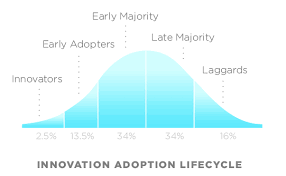BPO Service Offerings: 7 Essential RPA Core Competencies

In response to a growing client awareness of Robotic Process Automation (RPA), many business process outsourcing (BPO) providers now address the concept on their websites. Less clear is how many are aggressively implementing robotic automation offerings and delivery models. As with all emerging technologies, there will be a transition window leveraged by innovative competitors to achieve two long term advantages: competitive separation and growing market share. This article addresses seven essential RPA elements all providers need within their service offerings to be innovative and competitive.
BPO Service Offerings: Process Automation Challenges
Business process outsourcers will face challenges in bringing to market successful activity- based robotic automation (RA) offerings. One overarching challenge is the risk customers tend to associate with emerging technologies. Risk is best offset by potential for reward, but proven robotic process automation achievements have generally been tied to limited operational scope.
A more focused challenge is customizing robotic automation offerings to specific industries and processes such as: insurance (claims processing); accounting (order to cash); finance (record to report). These industries and processes have highly mature outsourcing service offerings with established value. The business process outsourcer will have to balance the marketing of existing offerings with - potentially - diminishing appeal with the marketing of increasingly sophisticated and compelling outcome-based and gain-sharing automation offerings. Certainly each provider will have to create an offering roadmap that makes sense, depending upon its commitment to destructive change, investment, comfort with risk, and appetite for innovation.

There are good reasons why some providers will choose not be among innovators or early adopters for rolling out RA offerings. Lack of urgency is one: it’s likely a majority of business process outsourcing opportunities in the next year or two will continue to skew toward customary solutions. Distraction is another: a rapid roll-out of transformational offerings could easily lead to confusion and disruption among current customers and delivery teams. Further, since the new solution architecture is diametrically opposed to old, confusion at the management and shareholder level is possible as well.
Process Automation Solutions Carry Big BPO Risks
There are only two ways robotic process automation products and solutions will be deployed in a business environment. Either the company will implement it – possibly with advisory and/or consulting assistance – or it will issue an RFP and outsource it to BPO provider.
The business process outsourcing providers who respond to such an RFP will face much greater deployment risks than the company itself would be exposed to in an internal deployment. Why? Each responding provider must architect and price a complex automation solution in a highly competitive bidding environment – with limited time and information. Further, RFP guidance and requirements generally precludes the least risky deployment approach: limited, flexible and incremental. That approach is often, for good reason, the one chosen by companies for internal projects with high risk profiles. The automation deployment must have a deployment scale capable of cost benefits which justifiy the time and effort involved in issuing an RFP.
Since these risks aren’t going away, innovative providers will be as committed to effective risk management as to competitive success and growth of market share. Their offerings will have these essential RPA elements.
BPO Service Offerings: 7 Essential RPA Elements
Leading Technology: Whether developed internally, purchased or partnered from a 3rd party, the automation software will use an industry standard, well understood, platform to deliver rapid, efficient design work. An example would be Microsoft.net. Strong system and desktop features will support user productivity while avoiding weaknesses such as: poor non-digital input capabilities (e.g. marginal OCR); narrow range of digital input formats; limited integration layers and technologies; inability to read emails & unstructured attachments.
Process Libraries: The automation software will feature large process automation libraries. These libraries, continually refreshed by ongoing design work, hold ‘snippets’ of workflow templates for common activities. The libraries enable rapid progress on more complex workflows by providing reusable, high quality, templates that eliminate repetitious effort.
Performance & Service Level Metrics based on Pilot Projects: Without a larger number of active engagements, new new robotic automation offerings lack performance & service level metrics required for RFP solution architecture, pricing and contract terms. Innovative providers will establish new RPA metrics for common processes by designing pilot projects to establish and compare RPA performance against active business process outsourcing performance for those same processes. .
Roles & Work Locations: Innovative solutions transform performance and service level metrics, they will also alter the design of the global delivery model. In a transaction-based solution, roles and work locations will be very different from an FTE-based solution. It’s possible senior business analysts will be required to handle processing exceptions thrown by the automation software, and this work may need to be in nearshore locations proximate to customer time zones.
Governance: The governance model for RA offerings must contain very strong change control policies & procedures to manage and escalate client-side work processing modifications. The governance framework must provide good visibility into direct - and indirect - consequences and risks on the robotic program level.
Case Studies: BPO leaders will leverage well documented, highly credible, process automation case studies to create customer RFP comfort levels for innovative solution architecture, delivery models and productivity metrics. Pilot projects may be case study sources until a critical mass of active automation engagements is established.
Consulting: In order to win RFP a process automation offering must provide a truly compelling value proposition – just as traditional business process outsourcing providers have always done. Innovators will meet this challenge by pricing a high value-add robotic automation consulting dimension into the solution – perhaps a limited number of free workflow automation proof-of-concepts for the customer. RA consulting services are attractive value-adds for three reasons: It displays RA intellectual leadership and provides credibility to the entire solution; customers have real needs to learn how this emerging technology applies to them – so a consulting value-add is highly relevant; it proactively addresses consulting services offered by direct or indirect competitors.

Strategic Advisor, Tquila Automation
Get articles from automation experts in your inbox
SubscribeGet articles from automation experts in your inbox
Sign up today and we'll email you the newest articles every week.
Thank you for subscribing!
Thank you for subscribing! Each week, we'll send the best automation blog posts straight to your inbox.



